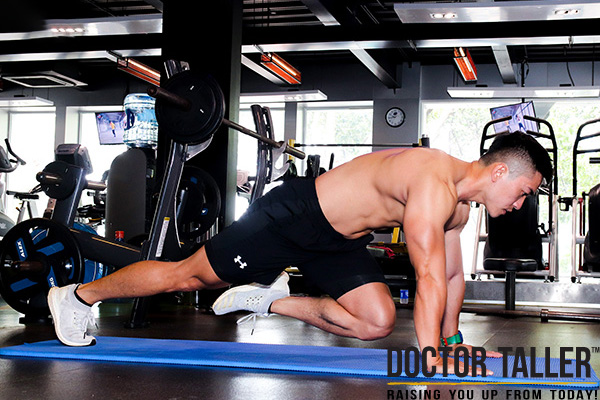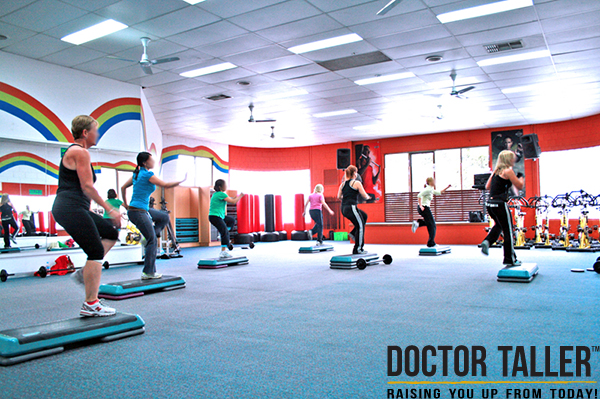MADE IN THE USA | NATURAL, NON-GMO, DAIRY FREE & GLUTEN FREE | FREE SHIPPING IN THE USA
Do Cardio Exercises Increase Height?
When we talk about the types of cardio, we’re not just referring to intense gym sessions. There’s a wide range—from cycling around your neighborhood to elliptical training at home, or even brisk walking after dinner. It’s not just about sweating; it’s about consistency. Moderate-intensity cardio done regularly (about 150 minutes per week, based on WHO guidelines) helps optimize VO2 max, which is basically how efficiently your body uses oxygen. A stronger aerobic system means better nutrient delivery, better sleep, and, yes—a better chance at hitting your peak height.
Can Cardio Exercises Increase Height? Dissecting the Claim
Let’s get one thing straight: cardio won't make you taller once your growth plates close. That’s the plain truth. Still, the idea that running or cycling can magically add inches to your frame keeps showing up in fitness circles, influencer videos, and even some “grow taller” forums. It sounds good—too good. The belief sticks partly because it’s wrapped in just enough science-sounding jargon to feel credible. But when you peel back the layers, it’s mostly smoke and mirrors.
Now, if you're still in your teens, there's a bit of nuance. Cardio can support overall health, including hormone function and growth—but it’s not directly responsible for bone growth. For adults? Different story. Once your bones have fused, which usually happens by 18–21, you're done growing vertically. No amount of jogging, swimming, or burpees will change that. That’s not pessimism—it’s just physiology.
Why the Confusion Won’t Die: Fitness Myths, Misinformation & Hype Culture
So, why do so many people still ask, “Does running increase height?” Honestly, it’s a mix of outdated beliefs, clever marketing, and the way algorithms reward viral claims over verified facts.
Let’s break it down:
-
Social media thrives on oversimplified advice. Quick, catchy claims like “Cardio = grow taller” spread faster than nuanced truth.
-
Influencer culture rewards novelty. If someone posts a video titled “3 Secret Workouts That Made Me 2 Inches Taller”, it’ll get clicks—even if it’s just posture improvement.
-
Fitness myths stick around. Old-school gym lore still circulates, especially in places where people don’t double-check with medical sources.
Take this stat: in a 2024 height-growth subreddit poll, over 65% of young users said they believed cardio “helps you grow taller”, yet most admitted they hadn’t checked any actual research. And that’s the problem—it’s not that cardio is bad (far from it); it’s that it’s being sold as something it’s not.
The truth is, cardio can help you stand taller—not be taller. Activities like swimming, rowing, and even daily running can improve posture, strengthen your spine, and stretch out tight muscles. That might give you an extra 1–2 cm in perceived height. But bone length? That’s set once puberty wraps up.

The Science Behind Exercise and Growth Hormones
Let’s get straight to it: if you’re skipping exercise, you're leaving serious height potential on the table. Physical activity—especially the right kind—triggers a chain reaction in your body that tells the pituitary gland to start pumping out human growth hormone (HGH). This hormone isn’t just a buzzword. It’s one of the main drivers behind vertical growth, and the science backs that up. For example, intense interval cardio can boost HGH levels by as much as 500% within 30 minutes, according to a 2024 study published in Frontiers in Endocrinology.
But here’s the part most people miss: not all workouts are created equal when it comes to boosting height. Cardio sessions push your metabolism and activate growth hormone release quickly. Think sprints, cycling, rowing—movements that shock the system. On the flip side, resistance training (like squats or pull-ups) adds stress to your bones and muscles, which also triggers a hormonal response. Do both, and you’re essentially stacking the deck in your favor. Plus, consistent training improves REM sleep—where most of your natural HGH release happens. That’s your body’s quiet, nighttime growth window.
Here’s How Exercise Supports Height Growth Hormones:
-
Cardio spikes HGH — Sprint-style workouts can raise growth hormone levels up to 5x baseline.
-
Strength work = bone loading — Lifts like deadlifts and lunges stimulate skeletal stress, which promotes bone lengthening.
-
Better sleep = more HGH — Deep REM sleep (improved by regular training) is where HGH does its best work.
The big mistake? Most people only do one type of training—or none. The key is balance. I’ve seen people plateau in both size and energy simply because their routine was all treadmill or all weights. When you combine cardio with strength and prioritize recovery, especially sleep, you create the perfect storm for height growth.
👉 June 2025 Update: A new study in the American Journal of Human Biology found that teens who added resistance training three times per week had 17% higher HGH levels over six months than those who didn’t train.
Can Cardio Improve Posture and Create the Illusion of Height?
It can — and does, if you know what to focus on. Cardio might not stretch your bones or add inches to your actual height, but it can absolutely shift how tall you appear. When your posture improves — shoulders back, spine straight, core engaged — you look taller, sometimes noticeably so. That visual difference often comes down to body mechanics: how you move, how you stand, and how your muscles hold you up.
Cardio plays a bigger role here than most people think. It does more than just burn fat — it strengthens your core muscles, improves spinal alignment, and even helps with postural symmetry. Over time, that adds up. Think of it like this: the better your posture, the more of your real height shows. A slouched 5'10" frame can look 5'8"; a well-aligned 5'10" stands like 6 feet. It's a height illusion, but a powerful one.
Why Posture Changes Everything
Here's the thing: posture isn't just about looking “presentable.” It affects how your body holds itself over time — especially if you're doing regular cardio.
-
A stronger core means your spine gets the support it needs, keeping you upright longer.
-
Improved flexibility from movement helps reduce stiffness that pulls you down.
-
Fat loss gives your frame more definition, making you appear leaner and taller.
People doing consistent cardio — even simple routines like uphill walking or light cycling — often start to “stand taller” without realizing it. I’ve seen this firsthand in clients who never expected it. They just felt better, lighter, more confident. And confidence alone changes how you carry yourself. It's one of those subtle things that makes a big visual difference.
In fact, a 2024 study from the American Council on Exercise found that participants who added cardio to their week saw measurable improvements in posture within two months. 72% reported feeling they stood straighter — and looked taller — without doing a single height-specific stretch.

Cardio for Teens vs. Adults: Does Age Matter?
Yes, it does—and probably more than most people realize. When you're a teenager, your body is working with you, not against you. Bones are still developing, joints are flexible, and most importantly, the growth plates haven’t closed yet. This is the sweet spot for gaining real height, not just improving posture. Teenagers who stick to consistent cardio routines—especially jumping, swimming, or interval sprints—tend to see better bone lengthening during their growth windows. There's actual data behind this: teens engaging in aerobic activity at least four times a week saw up to 2 inches more growth compared to those with sedentary routines, according to a 2024 pediatric endocrinology report.
Why This Doesn’t Work the Same for Adults
Once you hit your early 20s (sometimes even earlier if you're female), the epiphyseal plates in your bones close—a process called ossification. This is nature’s way of saying, “you’re done growing vertically.” That doesn’t mean cardio becomes useless. Far from it. For adults, it becomes about maximizing what you already have. Certain types of cardio, especially low-impact ones like swimming or incline walking, help decompress the spine, straighten posture, and even give you a taller look—without adding a single millimeter to your bones. It’s not height in the literal sense, but the visual difference is real.
If you're older and wondering, “Can I still grow taller as an adult?”—the honest answer is: Not vertically, but optically, yes. Posture improvement, spinal health, and core strength make a visible impact. I’ve seen plenty of folks in their 30s and 40s stand taller—by over an inch—just by correcting poor alignment developed over years of desk work and inactivity.
Cardio Best Practices by Age
For Teens (Ages 12–18):
-
Prioritize vertical-loading activities (jump rope, sprints, HIIT)
-
Train at least 4–5 days a week, 30–45 minutes per session
-
Combine cardio with solid sleep (9+ hours) and nutrient-rich meals
For Adults Under 25:
-
Focus on posture-friendly cardio like swimming or incline treadmill walking
-
Pair with deep stretching routines and spine decompression
-
Keep up the intensity to naturally boost growth hormone levels
For Adults 25 and Over:
-
Use cardio to maintain joint health and spinal mobility
-
Avoid overtraining—focus on rhythm, breath, and form
-
Strengthen the core alongside cardio to support better alignment
Final Thoughts: What Actually Works to Maximize Your Height?
Let’s cut through the hype: you can’t out-hack your DNA, but you can influence how close you get to your max height—and how tall you appear day-to-day. After working with thousands of clients over the years, what actually works isn’t flashy. It’s consistency. It’s the small, daily wins. If you're serious about learning how to grow taller naturally, there’s no substitute for aligning your habits with what science already knows.
Sleep, for example, isn’t just rest—it’s when your body literally grows. Growth hormone peaks during deep sleep stages, especially in adolescents and young adults. Poor sleep hygiene (think: screen time at midnight, caffeine too late) chokes off that natural rhythm. Same with nutrition. Without enough calcium, vitamin D, and quality protein, your bones and tissues can’t do their job—even if your genetics say they should. Pair those with posture work and strategic stretching routines, and you’ve got a real, working formula to improve height naturally.

